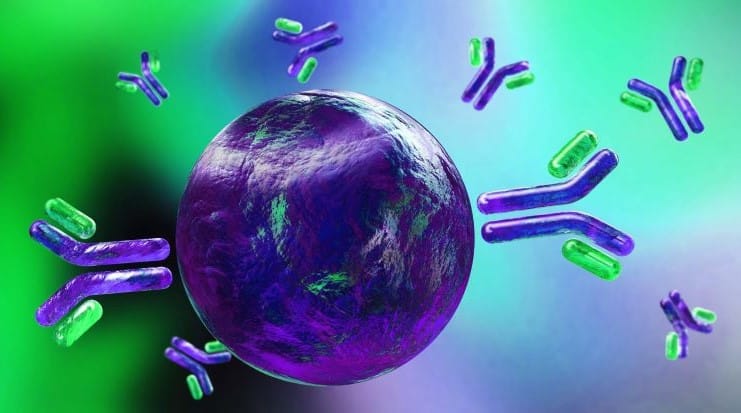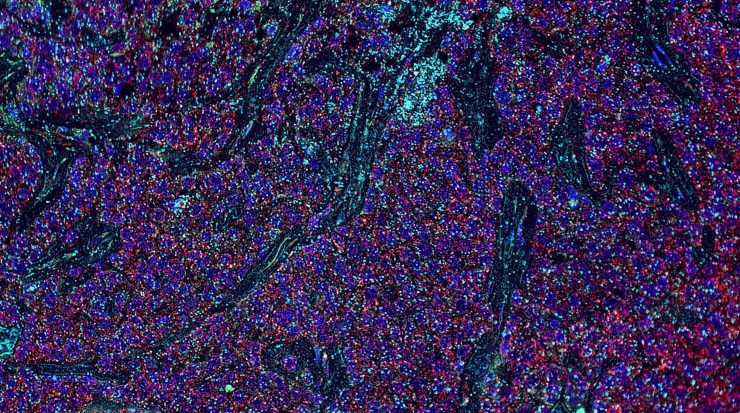Share a link
The Importance of Immunoassay Controls
Controls are critical to make sense of experimental data and ensure assays are performing consistently over time. While almost any type of biological assay should include positive and negative control samples, techniques such as flow cytometry, immunoprecipitation (IP), and enzyme-linked immunosorbent assay (ELISA) often require that additional types of controls be used to correctly interpret results.

What are controls?
Controls are essential components of any well-designed scientific experiment, where they serve to monitor assay performance and validate results. They include biological controls, which typically consist of known positive and known negative sample types, and workflow-based controls, such as those used for resolving multi-colored fluorescence within a flow cytometry experiment. Although biological controls are normally included in every assay, other controls may have more finite use. For example, when developing an ELISA, a secondary antibody only control might be run to rule out unwanted cross-reactivities, but it would not be required in the longer term.
We offer an extensive selection of secondary antibodies that are cross-adsorbed against multiple species to prevent off-target binding. These include products for detecting mouse, rabbit, goat, human, and rat IgG.
What are some examples of biological controls?
Biological controls are samples that are known to express, or lack expression of, the target of interest. Often, they consist of a cell or tissue type for which analyte expression has been confirmed by one or more peer-reviewed publications and/or via an open-access resource such as The Human Protein Atlas. Other examples of positive controls include cells that have been transfected, engineered, or treated in some way (e.g., with a cytokine or a small molecule drug) to ensure they express the target. Negative controls increasingly consist of cells in which target expression has been knocked out or knocked down with techniques like CRISPR or RNAi. Where the aim of an experiment is to measure a response to an experimental treatment, both treated and untreated control samples should be included.
Why are workflow-based controls important?
Although most immunoassay workflows involve the same main steps (blocking, antibody binding, washing, and detection), there are some fundamental differences between the various techniques. For example, while western blot generally provides a qualitative readout, ELISA is usually quantitative. And while IHC might be used for detecting just a single analyte, flow cytometry often measures multiple targets simultaneously. In addition, different detection modalities are used, and while some types of immunoassays are performed on lysates or biological fluids, others require whole cells or intact tissue sections.
For this reason, controls must be designed accordingly. Examples of workflow-based controls might include a purified immunoglobulin of known concentration for ELISA, to generate a standard curve and determine the amount of analyte present within test samples; a no antibody control for IP, to confirm that the beads used for pull-down are not binding non-specifically to the target; and the diverse range of fluorescence-based controls needed for flow cytometry to evaluate background signal, set gates, and address spectral overlap.
Flow cytometry controls
A typical flow cytometry experiment uses fluorophore-labeled antibodies to detect around 5-10 distinct parameters on individual cells within a mixed population. Due to the unique way in which the data is analyzed, and because fluorophore emission spectra can overlap, flow cytometry experiments must include multiple controls to ensure accurate results.
Unstained controls are useful for determining the level of autofluorescence, which comes from sources including riboflavin, NADH, and heme groups, and varies according to cell type. They are generated by treating samples as if they were test samples, but without adding primary or secondary antibody reagents.
Isotype controls are antibodies with the same host and isotype as target-specific antibodies but which do not recognize the analyte of interest. They are used to ensure that any observed staining is specific, rather than being a result of off-target binding to components such as Fc receptors, other cellular proteins, or fluorophores.
Fluorescence-minus-one (FMO) controls consist of samples that have been stained with all but one of the fluorophores being used in a multiplexed panel. They enable researchers to understand how the remaining fluorophores bleed through into the detection channel.
Compensation controls are samples containing both a positive population and a negative population, which have been stained with just a single fluorophore. They are measured across all detectors to allow for fluorescence spillover to be removed, usually through the use of automated software.
Cell viability controls are used to eliminate false positives due to the presence of dead cells, which can both autofluoresce and bind non-specifically to antibody reagents. Dyes used for assessing cell viability include propidium iodide (PI), which fluoresces red upon intercalation with DNA and is excluded from cells with intact membranes; 7-amino-actinomycin D (7-AAD), which functions similarly to PI; and calcein AM, which is hydrolyzed by intracellular esterases in live cells to form green fluorescent calcein.
Our product portfolio includes over 200 isotype controls from mouse, rat, human, goat, and rabbit hosts for use in flow cytometry.






